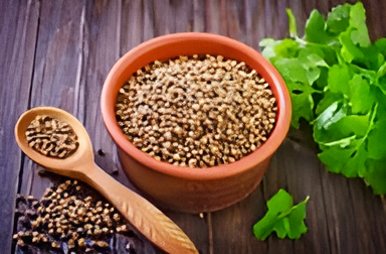
The Versatile Herb: A Comprehensive Guide to Coriander
Coriander, also known as cilantro in many parts of the world, is a popular herb that has been used for thousands of years in various cuisines and traditional medicine. This aromatic plant, belonging to the Apiaceae family, is valued for its distinctive flavor, nutritional benefits, and diverse applications. In this guide, we will explore coriander’s culinary uses, health benefits, growing tips, and cultural significance.
Culinary Uses of Coriander
Coriander leaves and seeds are both commonly used in cooking, each imparting unique flavors to dishes.
- Fresh Leaves: The fresh leaves of coriander, or cilantro, have a bright, citrusy flavor that enhances a variety of dishes. They are often used as a garnish or as an ingredient in salsas, salads, and sauces. Popular in Mexican, Indian, and Southeast Asian cuisines, fresh coriander adds a vibrant touch to recipes like guacamole, curry, and pho.
- Dried Seeds: The seeds of the coriander plant have a warm, spicy flavor with a hint of citrus. They are often used whole or ground in spice blends, marinades, and baked goods. Coriander seeds are a key ingredient in garam masala, a staple in Indian cooking, and are also used in pickling.
- Coriander Oil: Extracted from the seeds, coriander oil is used for both culinary and therapeutic purposes. It adds flavor to dishes and is also found in aromatherapy and natural remedies.
- Coriander in Different Cuisines:
- Mexican Cuisine: In addition to guacamole, cilantro is frequently used in tacos, enchiladas, and fresh salsas.
- Indian Cuisine: Coriander is a key ingredient in many Indian curries and chutneys, providing essential flavor to the dishes.
- Middle Eastern Cuisine: Coriander is commonly used in dishes like tabbouleh and falafel, enhancing the fresh flavors.
Nutritional Benefits of Coriander
Coriander is not just a flavor enhancer; it also offers numerous health benefits:
- Rich in Nutrients: Fresh coriander is low in calories but high in vitamins A, C, and K, as well as several essential minerals like potassium, calcium, and magnesium.
- Antioxidant Properties: Coriander contains powerful antioxidants that help combat oxidative stress in the body, potentially reducing the risk of chronic diseases.
- Digestive Aid: Traditionally, coriander has been used to alleviate digestive issues. It may help in reducing bloating, gas, and indigestion.
- Anti-inflammatory Effects: The compounds in coriander can help reduce inflammation, which is beneficial for overall health and may aid in managing conditions like arthritis.
- Blood Sugar Regulation: Some studies suggest that coriander may help lower blood sugar levels, making it a potential herb for those managing diabetes.
Growing Coriander at Home
Home gardeners frequently choose coriander because it is comparatively simple to grow. Here’s how to cultivate this herb:
- Choosing the Right Location: Coriander prefers well-drained soil and a sunny spot. It thrives in temperatures between 60°F to 75°F (15°C to 24°C).
- Sowing Seeds: You can sow coriander seeds directly into the ground or start them indoors. Plant seeds about 1/4 inch deep and 6 inches apart. Germination typically takes about 7-14 days.
- Caring for the Plants: Water the plants regularly, ensuring the soil remains moist but not soggy. To promote healthy growth, fertilize with a balanced fertilizer every few weeks.
- Harvesting: You can start harvesting leaves once the plant reaches about 6 inches tall. For seeds, allow the plant to flower and then collect the seeds once they turn brown and dry.
Cultural Significance of Coriander
Coriander holds cultural significance in many societies. It is often associated with freshness and vitality in culinary traditions.
- Symbolism: In various cultures, coriander symbolizes protection and prosperity. It was thought to fend off evil spirits in several ancient cultures.
- Traditional Medicine: Coriander has been used in traditional medicine systems, including Ayurveda and Traditional Chinese Medicine, for its various health benefits.
- Festivals and Rituals: In some regions, coriander is used in festivals and rituals, often as part of offerings to symbolize abundance.
Conclusion
Coriander is a remarkable herb that enhances the flavor of countless dishes while also providing numerous health benefits. Whether you enjoy its fresh leaves or the warm spice of its seeds, incorporating coriander into your diet can be a delicious and nutritious choice. With its easy cultivation process, anyone can grow this versatile herb at home, bringing a touch of culinary freshness to their kitchen. Embrace the world of coriander, and let its vibrant flavor and health benefits enrich your life!